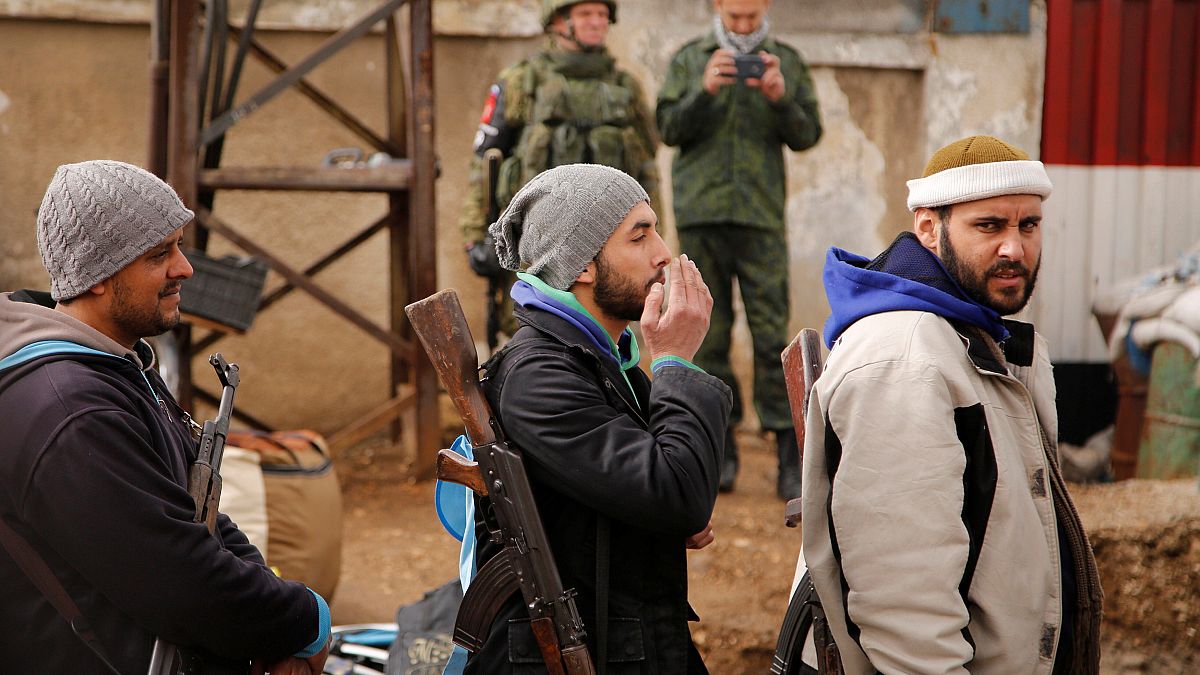Eyewitnesses say rebels and their families have begun leaving their last bastion in the Syrian city. The Russian-backed deal with the government is expected to be among the largest evacuations of its
Eyewitnesses say rebels and their families have begun leaving their last bastion in the Syrian city of Homs.
The Russian-backed deal with the government is expected to be among the largest evacuations of its kind.
Syrian rebels, civilians begin leaving Homs district in deal with government https://t.co/Cp7WYKmYnDpic.twitter.com/4ivdnBMnTo
— Reuters Top News (@Reuters) 18 mars 2017
What is happening?
Several buses drove out of the al-Waer district in Homs. It was an early centre of the popular uprising against President Bashar al-Assad.
They were accompanied by SARC ambulances, eyewitnesses say.
Police officers searched people before the buses drove out.
#Syrie évacuation d'al-Waar #Homs (part2) des Russes et des bus… pic.twitter.com/1JWhkcqcMn
— Wassim Nasr (@SimNasr) 18 mars 2017
How many people are leaving?
Opposition activists say between 10,000 and 15,000 rebels and civilians will evacuate in batches over the coming weeks under the terms of the deal.
Homs governor Talal Barazi told the Reuters news agency he expected 1,500 people, including at least 400 fighters, to leave on Saturday for rebel-held areas northeast of Aleppo.
Along with the Syrian Arab Red Crescent (SARC), Russian and Syrian forces were overseeing the evacuation, which would take about six weeks, Barazi added.
Where are they going?
The UK-based Syrian Observatory for Human Rights says the buses will go to the Jarablus area, which is held by Turkish-backed rebels in the northern Aleppo countryside.
Once accomplished, it would mark the biggest evacuation during the war out of a single Syrian district. Al-Waer is home to around 40,000 civilians and more than 2,500 fighters, according to monitors.
#Homs: First batch of #Displaced civilians evacuating #Waar neighborhood to #Jarablus 18-3-2017
Full: https://t.co/RtlBWcaOPYpic.twitter.com/YG0fiEixhI— Qasioun News Agency (@QASIOUN_NEWS) 18 mars 2017
Idlib
A few hundred rebels from the district have previously been allowed safe passage to Idlib in the northwest.
Increasing numbers of rebels and civilians have poured into Idlib over the last year from other parts of western Syria that the government and allied forces recaptured from rebels.
Are there plans for other evacuations?
Barazi says there is communication with other rebel-held areas north of Homs city to reach similar deals, including the towns of al-Rastan and Talbiseh.
“We are optimistic that the full exit of armed (fighters) from this district will pave the way for other reconciliations and settlements,” he said.
The government has increasingly tried to press besieged rebel areas to surrender and accept what it calls reconciliations agreements.
In the coming weeks, evacuees could be shuttled to other rebel-held areas in northern Syria, including the insurgent stronghold of Idlib province, according to state TV.
Under the agreement, fighters could stay in al-Waer if they hand over their weapons and settle their affairs with the government, it said.
Rebels “on the back foot”
Rebel groups have been on the back foot in Syria following Russia’s intervention into the war on the side of Assad.
Moscow has brought air power and support from its Iranian and Shi’ite militia allies.
The wide array of mosty Sunni rebel factions includes some jihadists as well as some groups supported by the US, Turkey and Gulf states.
Assad’s “upper hand”
The agreement underlines Syrian President Bashar al-Assad’s upper hand in the conflict. More rebel fighters are opting to leave areas they have defended for years in deals that amount to negotiated withdrawals to other parts of the country.
The Syrian government has described such deals as a “workable model” that brings the country closer to peace after six years of conflict.
However, the opposition decries them as a tactic of forcibly displacing people who oppose Assad after years of bombardment and siege.
UN talks
The UN’s special envoy for Syria has held talks with Syrian opposition negotiator Riyad Hijab in Saudi Arabia.
Staffan de Mistura has been trying to mediate a political agreement between Syria’s warring sides.
After the fourth round of talks ended in Geneva on March 3, he plans to bring the negotiators back for in-depth discussions on March 23.
So far, talks to end the six-year war have gone almost nowhere.
In numbers:
- hundreds of thousands have died
- Five million have fled
- 13.5 million in urgent need of aid
De Mistura arrived in Riyadh late on Friday and is not expecte to meet any Saudi officials.
QNA | Staffan de Mistura Invites Syria's Regime, Opposition to Resume Geneva Talks on March 23 https://t.co/73AGxmMiEfpic.twitter.com/HYfzAFXLod
— Qatar News Agency (@QNAEnglish) 9 mars 2017
What they are saying
“The preparations and the reality on the ground indicate that things will go well,” Homs governor Talal Barazi
